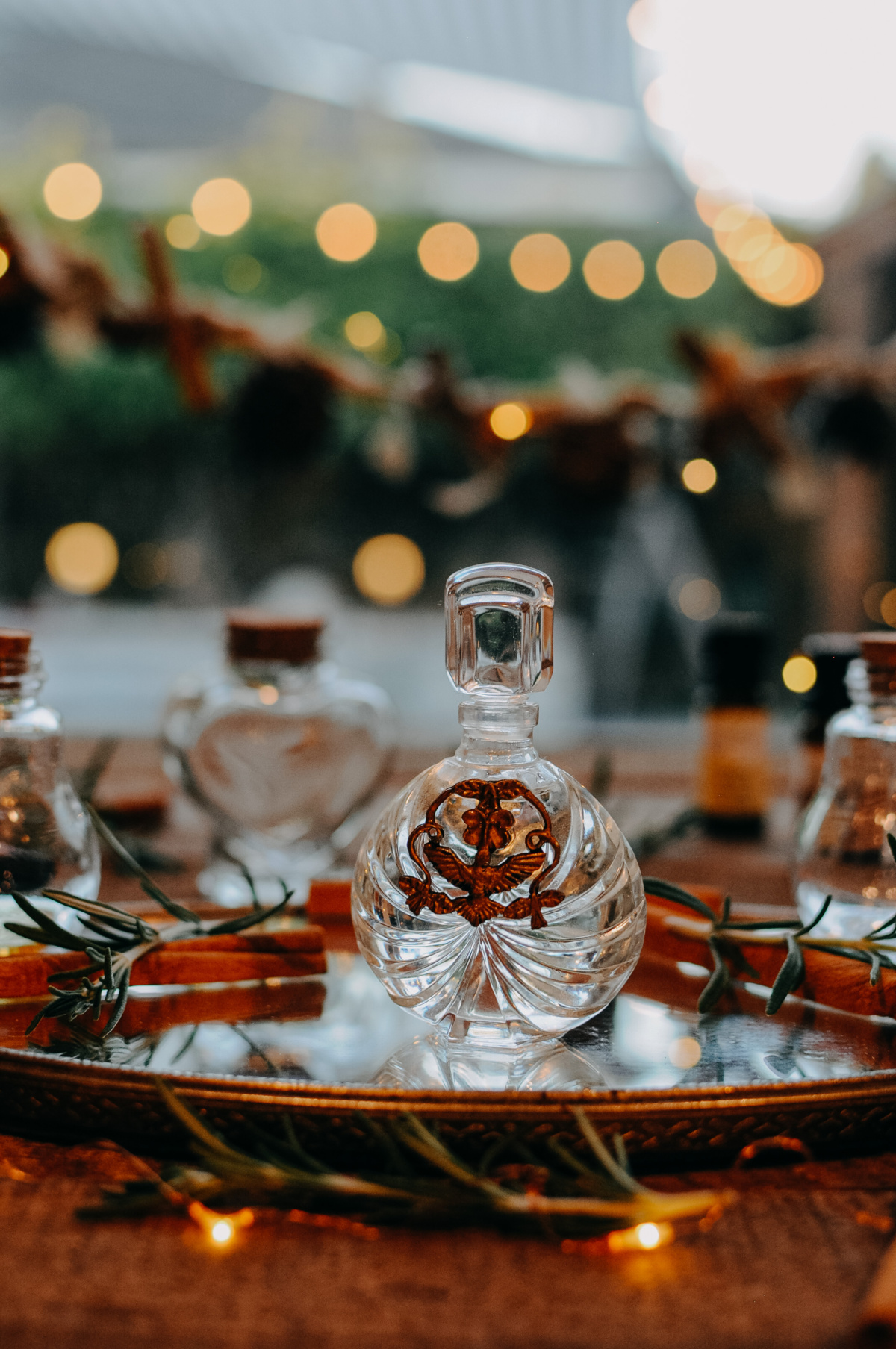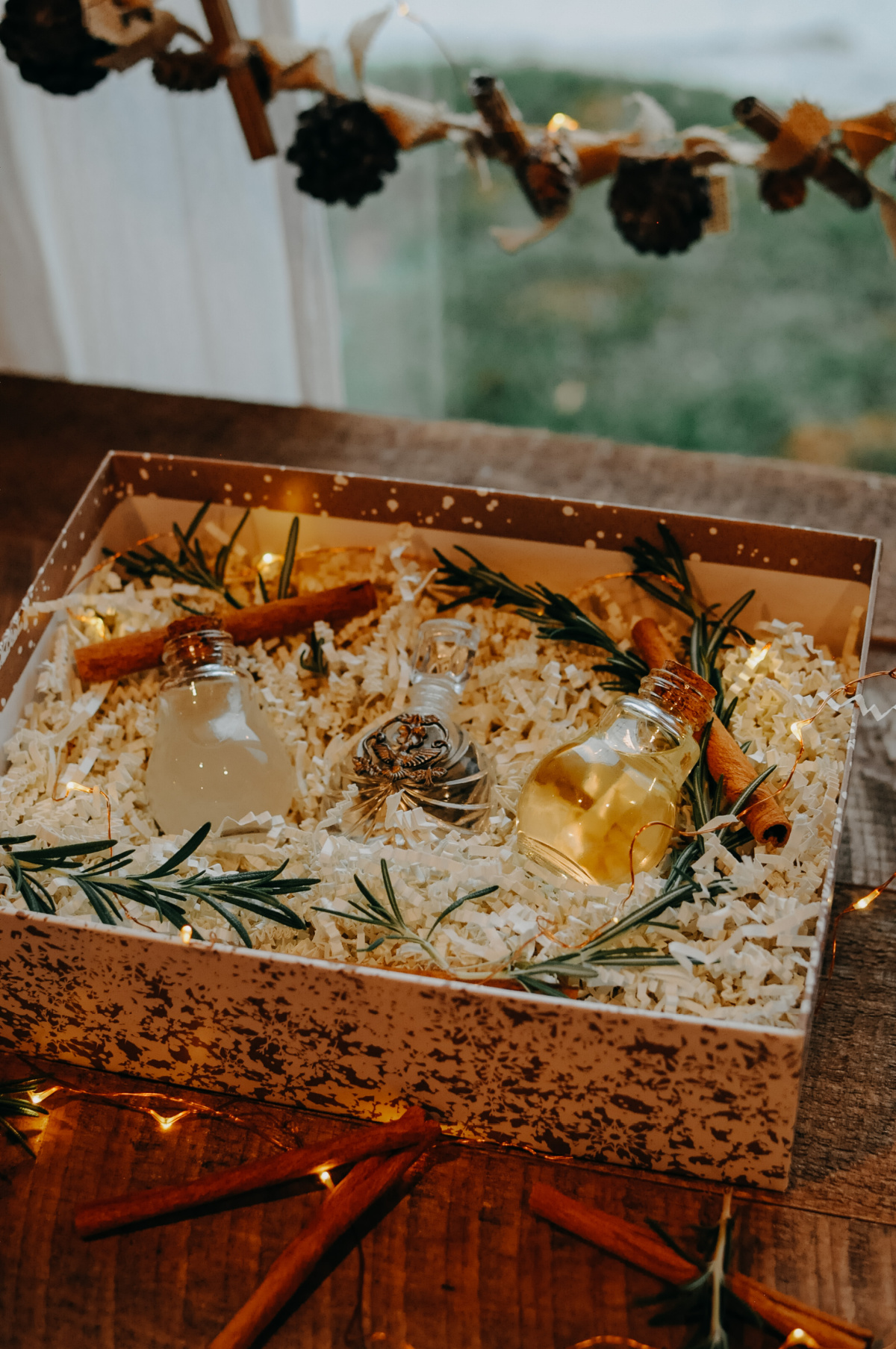
Essential Oil Perfume: A DIY Gift Idea
The holidays are a wonderful time to give something that the receiver wouldn’t normally indulge themselves in. Something pretty, or something sentimental, or something handmade. An essential oil perfume recipe checks all those boxes! Crafting a unique scent is a fun way to show care to the receiver, and to pull in special memories through the power of aroma. Depending upon your personal life experiences, certain smells may evoke particular memories. Walking into your Grandma’s house and taking a deep breath of warm ginger. Childhood memories of smelling cinnamon simmering on the stove. Or your first place, all on your own, adorned with calming lavender throughout your cozy space. The link of smell to memory is a powerful one.

Crafting Your Own Essential Oil Perfume
Do you make your own perfume? Essential oil blends are not something new, but turning those into a perfume blend might be. Base notes and tips on how to make your scent’s aroma last longer are “essential” when crafting your own blend.
The key to making your own perfume blends last is natural essential oil fixatives. A fixative slows down the evaporation of those important volatile oils (Worwood, 1991). This will help retain the scent of your blend and when using natural essential oil fixatives; they also bring their own unique fragrance. This is a win, win! Here’s a short list of some essential oil fixatives you can choose from: frankincense (Boswellia carterii), clary sage (Salvia sclarea), cedarwood (Cedrus atlantica), patchouli (Pogostemon cablin), sandalwood (Santalum album), and vanilla (Vanilla plantifolia).
The best thing about natural fixatives is that they can also double as important notes in your perfume recipe, namely the base note. Most DIY perfumes call for a base note—this scent has staying power. A middle note is the heart of the fragrance. Lastly, the top note is one that fades quickly, but tends to be the most aromatic of the group. Typically the ratio used is 3:2:1, but even a 1:1:1 ratio can be used (Worwood, 1991). Your nose will know!

Two Approaches to Handmade Perfume
Alcohol vs. Oil Base
Both types of bases have their benefits. An alcohol-based perfume is one we are all typically familiar with. Alcohol-based perfumes are the ones that you will typically find in the perfume aisle. If you test one out, the first spray is a powerful one. The air around you fills with an intense scent. The alcohol base in perfumes gives a stronger first impression. However, there is a downfall. This approach, although initially strong, will evaporate quickly. The staying power is much less than the next approach, oil-based.

Oil-based perfumes are generally used as roll-ons, or in my case, bottled up in cute vintage perfume jars and dabbed onto the skin. Since the blend sits in an oil base, when applied, the perfume will have staying power. Rather than the evaporation of the alcohol-based perfumes, oil sits on top of the skin and will remain there much longer. The flip side to these is that they have a more subtle scent. Unless you have a sensitive nose, you may not detect these perfumes unless you are locked into a warm hug with the wearer. Speaking of a warm hug, I’ve created two blends using the two methods below. These are an easy approach to creating your first essential oil perfume and will be perfect as gifts this holiday.

Essential Oil Perfume Recipes
To start creating your own perfume blends, you will need a few days and a lot of smell tests. I made two variations, a warm spice perfume blend, and an invigorating medley.
A warm, earthy base with a hint of spicy sweet. This is a holiday favorite, bringing in the familiar smells of the season. This blend uses the 3:2:1 ratio.
12 drops frankincense (Boswellia carterii) essential oil (base note) To use:
An oil-based essential oil perfume can be bottled up in rollers or little vintage perfume bottles. You can either roll or dab onto your skin, such as behind the ears, along your wrists, and the sides of your neck. As a general rule, I typically estimate that oil-based perfumes have a shelf life of about a year. A noticeable off-smell will begin to form and you will know it is time to toss.
A vibrant blend of invigorating scents that meld together to create an uplifting perfume. This blend uses the 3:2:1 ratio
12 drops cedarwood* (Cedrus atlantica) essential oil (base note) *Can replace cedarwood with vetiver for a more sustainable option.
To use:
An alcohol-based essential oil perfume can be bottled up in small perfume spray bottles. Be sure to do a test spot to make sure the blend is not too harsh for your skin. The shelf life of an alcohol-based perfume is typically 3 to 5 years.
The beautiful memories attached to smells and scents can be crafted and bottled up…and giving an essential oil perfume offers the opportunity to form new, pleasant memories! In any case, giving this gift to someone special will make for a memorable holiday. Each time a dab is applied or a spray hits the air, they will think of you. If you find the world of perfume interesting, there is far more in-depth knowledge and approaches in the Herbal Academy Natural Perfumery Course.
Worwood, V. (1991). The complete book of essential oils and aromatherapy. Novato, CA: New World Library.
Warm Hug Perfume Blend Ingredients
8 drops cinnamon leaf (Cinnamomum zeylanicum) essential oil (middle note)
4 drops sweet orange (Origanum majorana) essential oil (top note)
3 ounces sweet almond oil, 3 ounces
3 drops vitamin E oil

Uplift Perfume Blend Ingredients
8 drops clary sage (Salvia sclarea) essential oil (middle note)
2 drops rosemary (Rosemarinus officinalis) essential oil (top note)
2 drops lemon (Citrus limon) essential oil (top note)
3 ounces 190 proof alcohol

In Closing,
 REFERENCES
REFERENCES








